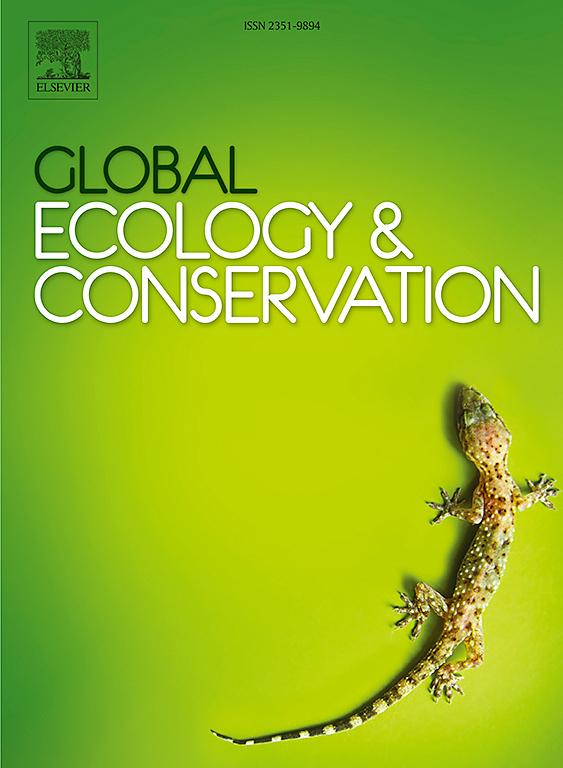Genetic diversity and seascape population structure in eelgrass (Zostera marina) meadows in the northwestern Pacific
IF 3.5
2区 环境科学与生态学
Q1 BIODIVERSITY CONSERVATION
引用次数: 0
Abstract
Seagrasses, the only flowering plants in the ocean, provide numerous, but crucial ecosystem services for coastal and estuarine environments. Yet, natural seagrass populations have been continuously declining worldwide due to ongoing climate change and accelerating anthropogenic influences. To make conservation efforts for effectively managing and preserving local seagrass populations, an understanding of their genetic diversity and population structure is essential. In the present study, using seven microsatellites we assessed the current population genetic status and phylogenetic relationships of Zostera marina, the predominant seagrass species in the northwestern Pacific, on the entire coasts of the Korean Peninsula and Jeju Island and also the northeastern China and southwestern/northern Japan. Results of genetic diversity analysis revealed that Jeju Island populations display the higher degree of asexual reproduction, as indicated by a lower level of clonal diversity, and thus significantly reduced genetic diversity than any other coastal regions. Genetic population structure tended to be grouped into corresponding coastal regions, although two genetic clusters are the most likely, which can be attributed to limited contemporary gene flow occurring among the regional populations. Jeju Island population has a unique genetic composition in reference to the other sea areas, and the possibility of local extinction may be the highest due to the depleted genetic diversity as well as strong genetic differentiation. Our study provides fundamental information on the eelgrass’s genetic diversity and spatial population structure over the northwestern Pacific, which helps to make restoration efforts, including transplantation projects, particularly for the Jeju Island population.
西北太平洋大叶藻草甸遗传多样性和海景种群结构
海草是海洋中唯一的开花植物,为沿海和河口环境提供了大量但至关重要的生态系统服务。然而,由于持续的气候变化和不断加速的人为影响,世界范围内的天然海草种群不断减少。为了有效地管理和保护当地海草种群,了解其遗传多样性和种群结构是必不可少的。本研究利用7颗微卫星对西北太平洋、朝鲜半岛和济州岛全海岸以及中国东北和日本西南/北部地区的优势海草Zostera marina的种群遗传现状和系统发育关系进行了分析。遗传多样性分析结果显示,济州岛种群的无性繁殖程度较高,克隆多样性水平较低,遗传多样性明显低于其他沿海地区。遗传种群结构倾向于划分为相应的沿海区域,尽管两个遗传集群最有可能出现,这可归因于区域种群之间有限的当代基因流动。与其他海域相比,济州岛种群具有独特的遗传组成,由于遗传多样性的减少和遗传分化的强烈,局部灭绝的可能性最高。本研究为西北太平洋大叶藻的遗传多样性和空间种群结构提供了基础信息,为大叶藻的恢复和移植提供了理论依据。
本文章由计算机程序翻译,如有差异,请以英文原文为准。
求助全文
约1分钟内获得全文
求助全文
来源期刊

Global Ecology and Conservation
Agricultural and Biological Sciences-Ecology, Evolution, Behavior and Systematics
CiteScore
8.10
自引率
5.00%
发文量
346
审稿时长
83 days
期刊介绍:
Global Ecology and Conservation is a peer-reviewed, open-access journal covering all sub-disciplines of ecological and conservation science: from theory to practice, from molecules to ecosystems, from regional to global. The fields covered include: organismal, population, community, and ecosystem ecology; physiological, evolutionary, and behavioral ecology; and conservation science.
 求助内容:
求助内容: 应助结果提醒方式:
应助结果提醒方式:


